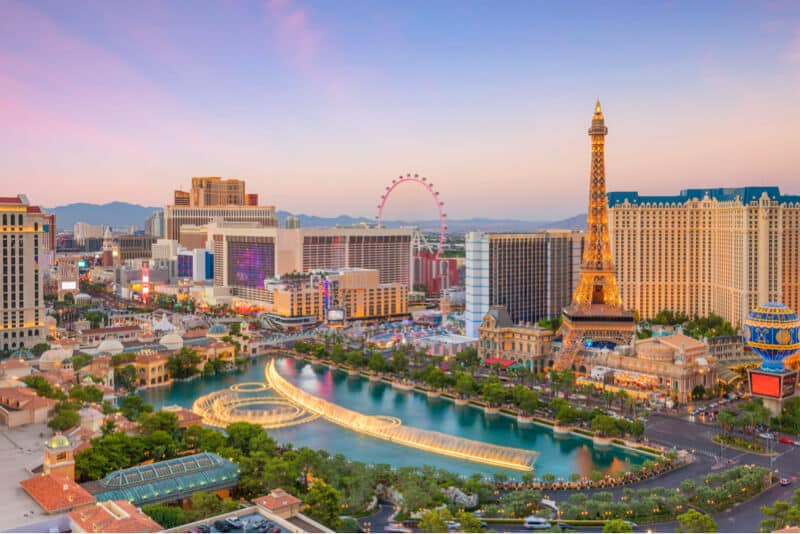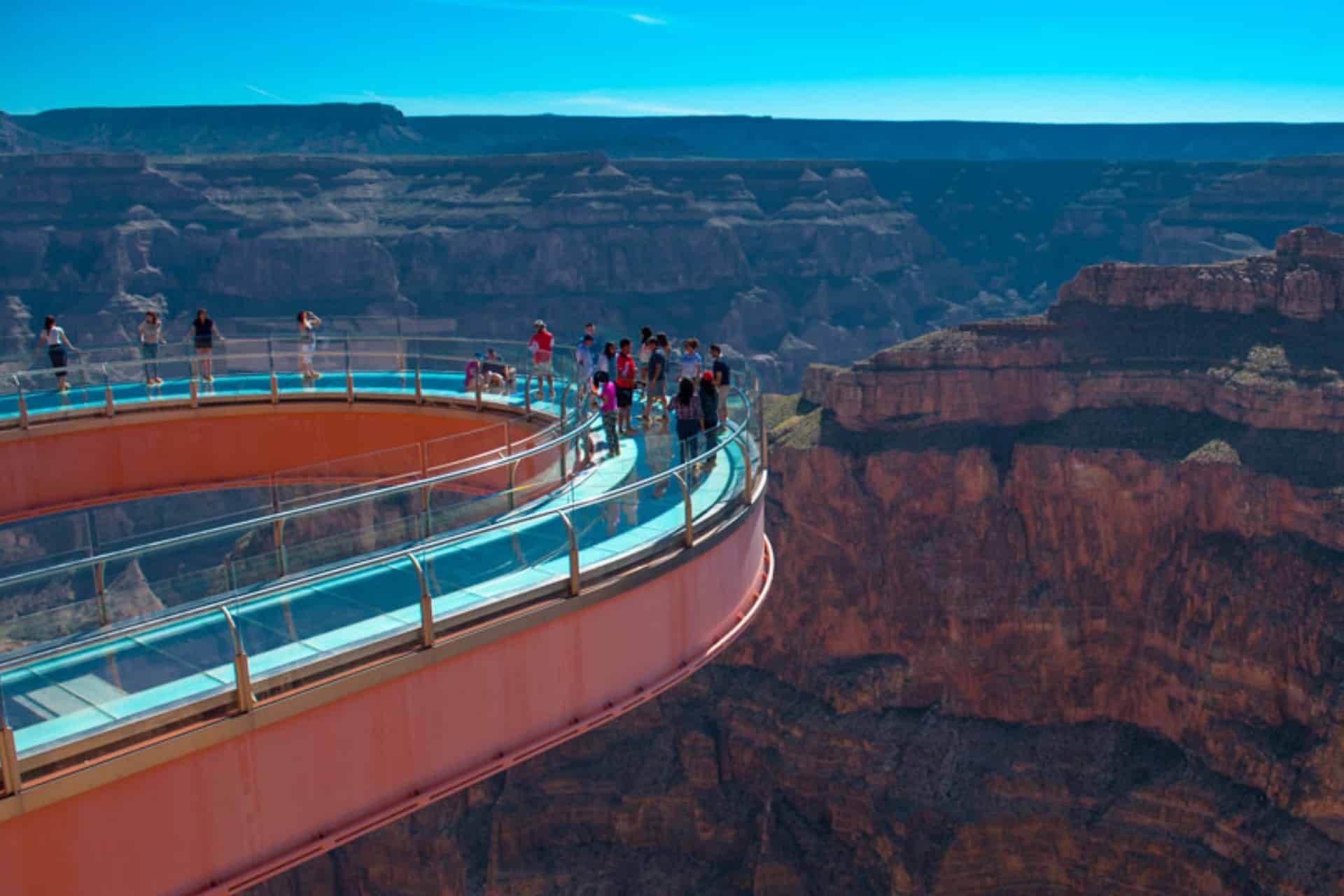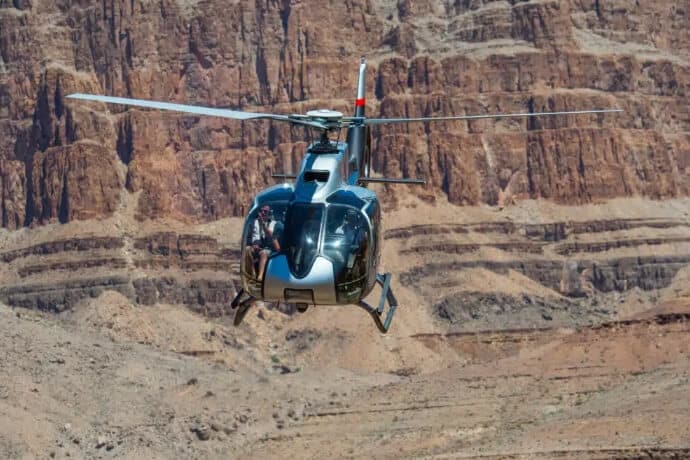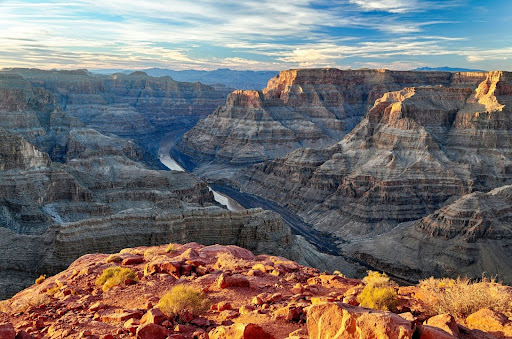
10 Interesting Facts About the Grand Canyon That Will Melt Your Mind
Some places are impressive. The Grand Canyon is overwhelming. It’s not just big—it’s bigger than most people realize. It’s not just old—it’s so ancient that parts of it predate life itself. If you think you already know what makes it special, these Grand Canyon facts might just change your perspective.
1. It’s Longer Than Your Last Road Trip
At 277 miles long, the Grand Canyon stretches farther than the drive from Las Vegas to Los Angeles. If you could lay it out straight, it would take nearly five hours to drive from one end to the other—assuming there were roads, which there aren’t.
Think you can hike the whole thing? Some have tried, but most don’t make it. With harsh desert conditions, extreme temperatures, and an elevation change of over a mile, walking from one end to the other would take weeks, if not months—and a level of endurance most people simply don’t have.
2. It’s Deep Enough to Swallow Skyscrapers Whole
The Grand Canyon plunges 6,093 feet at its deepest point—which means you could stack four Empire State Buildings inside and still have room left over. The view from the rim? Absolutely unreal. The hike down? A leg-burning, dehydration-inducing beast.
Most visitors take one look over the edge and decide to stick to the scenic overlooks. Those brave enough to descend into the canyon learn the hard way that the real challenge isn’t going down—it’s coming back up.
3. Some of Its Rocks Are Nearly Half the Age of the Earth
Sure, the Grand Canyon itself has only been around for about 5-6 million years, but the rock at the bottom? That stuff is 1.8 billion years old—meaning it existed before dinosaurs, trees, and even most of Earth’s atmosphere.
To put that in perspective, the Earth itself is about 4.5 billion years old. That means some of the rock formations in the canyon have been sitting there, minding their own business, for nearly half of Earth’s history. It’s like looking at the planet’s oldest diary entry, written in stone.
4. It Creates Its Own Weather
Most places just deal with whatever weather rolls in. The Grand Canyon, on the other hand, has microclimates—which means the weather at the top can be completely different from what’s happening at the bottom. In winter, the South Rim gets snow, while the canyon floor stays warm. In summer, the bottom can hit 120°F, while the top is breezy and mild. Temperature swings of 50+ degrees in a single day aren’t unusual.
So if you’re planning to hike down to the river, don’t assume that mild morning breeze means it’ll stay comfortable. What starts as a cool trek down can turn into a sun-baked suffer-fest on the way back up.
5. The Grand Canyon Is an Adventure Magnet
With over 6 million visitors per year, the Grand Canyon is one of the most popular natural attractions in the world. But not everyone experiences it the same way.
- 90% of visitors stick to the South Rim, where the views are classic postcard material.
- The West Rim is home to the Grand Canyon Skywalk, a glass bridge suspended 4,000 feet above the canyon floor—ideal for anyone who wants to test their fear of heights.
- The North Rim is rugged, remote, and sees way fewer visitors, but it also gets heavy snowfall in winter, shutting down access for months.
And then there are the real thrill-seekers—the ones who hike, raft, or even BASE jump into the canyon (though the National Park Service isn’t exactly thrilled about that last one).
6. The Colorado River Is Relentless
The Colorado River isn’t just a pretty ribbon of water cutting through the canyon—it’s the original architect of this entire landscape. Over millions of years, this river has been carving through solid rock, creating the depths and layers we see today.
- It runs 277 miles through the Grand Canyon but stretches 1,450 miles total, flowing through seven U.S. states and into Mexico.
- It carries so much sediment and rock that it moves an estimated 500,000 tons of material every single day—literally reshaping the canyon as we speak.
Still think water is weak? This river has been grinding away at rock longer than humans have existed—and it’s nowhere near done.
7. It’s a Wildlife Wonderland
For a place that looks like a giant, rocky wasteland, the Grand Canyon is shockingly full of life.
- It’s home to over 90 mammal species, 447 bird species, and 58 reptile species—including some that don’t exist anywhere else.
- The California condor, once nearly extinct, now soars over the canyon with a wingspan of up to 10 feet—making it one of the largest flying birds in the world.
Spotting wildlife here isn’t rare. But be warned—some of the canyon’s residents, like rattlesnakes and scorpions, aren’t exactly thrilled to see you.
8. The Temperature Swings Are Ridiculous
The Grand Canyon isn’t just vast—it’s extreme. While the South Rim sees mild summers and snowy winters, the bottom of the canyon is a completely different beast.
- Summer temps at Phantom Ranch (canyon floor) regularly hit 120°F (49°C)—making it one of the hottest places in North America.
- Winter at the South Rim? Below 0°F (-18°C) isn’t unheard of.
- In just a few hours, hikers can experience a temperature shift of 50-60 degrees—like going from spring to full-blown desert inferno.
Hikers who don’t take this seriously end up in trouble fast. Dehydration rescues? Common. Hikers turning back halfway? Even more common. If you ever plan to trek rim to river, bring way more water than you think you need—or better yet, let a helicopter do the hard work for you.
9. It’s Bigger Than Entire Countries
People say the Grand Canyon is huge—but huge doesn’t quite cover it.
- It spans 1,904 square miles, which is larger than the entire state of Rhode Island.
- If it were its own country, it would outrank a dozen smaller nations in total land area.
- Some of the canyon’s rock layers are so vast they stretch across multiple states, meaning parts of what you see in Arizona were once connected to Utah, Nevada, and beyond.
Looking out across the canyon’s endless ridges, you get the feeling that it just keeps going—because, in many ways, it does.
10. There’s No “Best” Way to See It—But Helicopters Help
There are a lot of ways to experience the Grand Canyon, but nothing quite compares to seeing it from above.
- Hiking & rafting give you a ground-level look, but it takes days to see just a fraction of the canyon.
- Driving the rim? Great for quick stops, but you only get to see a handful of viewpoints.
- Helicopter tours? Now we’re talking. In a matter of minutes, you can witness millions of years of history carved into the landscape from an angle that no hike, raft, or car ride can offer.
Sure, you could spend weeks exploring the Grand Canyon piece by piece—or you could skip the blisters and see the whole thing in one unforgettable flight.
Don’t Just Read About It—Fly Over It!
You can read all the facts about the Grand Canyon, but no statistic, no drone shot, and no secondhand description will ever do it justice. The only way to truly understand its scale, beauty, and sheer power is to see it for yourself. For those who want to see the Grand Canyon the way it was meant to be seen—from the air, with nothing but endless rock formations stretching beneath you—there’s a better option: a helicopter tour with GC Flight.
- Fly over the Grand Canyon’s deepest, most awe-inspiring sections.
- Experience a perspective that few ever get to see.
- Capture the full scale of this natural wonder in a way no road trip or hike ever could.
Skip the postcards. See it for real. With GC Flight’s helicopter tours, you can experience the Grand Canyon like never before—without the crowds, the exhaustion, or the limits of ground-level travel.
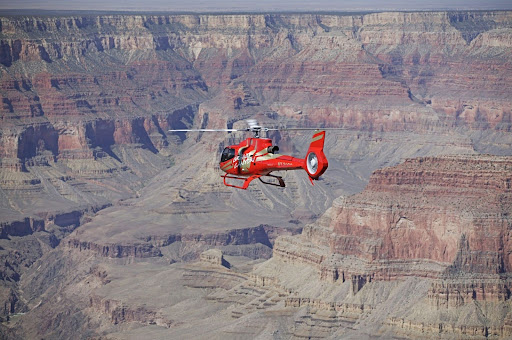
Book a Grand Canyon Tour at GC Flight!
The Grand Canyon is one of those places you have to see to believe—and even then, it’s hard to wrap your head around its sheer scale. Whether you want to soar over its deepest canyons in a helicopter, take in sweeping views from an airplane, explore by bus, or add some thrills with an adventure tour, GC Flight makes it easy to experience this natural wonder from the best vantage points. Skip the crowds, avoid the endless hiking, and get straight to the unforgettable moments. Book your Grand Canyon tour today and see what all the stats and photos could never capture.
Frequently Asked Questions: Fun Facts About the Grand Canyon
If you’d like to learn more fun facts about the Grand Canyon before your trip, check out the answers to our most frequently asked questions!
Is the Grand Canyon the biggest canyon in the world?
Nope! While it’s one of the most famous and certainly one of the deepest in the U.S., the Grand Canyon is not the largest canyon in the world. That title often goes to Yarlung Tsangpo Grand Canyon in Tibet, which is longer and deeper. However, no other canyon offers the same combination of accessibility, history, and breathtaking landscapes as the Grand Canyon.
Are there any hidden caves in the Grand Canyon?
Yes—a lot of them! The Grand Canyon has more than 1,000 documented caves, but only 335 have been explored and recorded. Many remain untouched, and only one—The Cave of the Domes—is open to the public. Some caves contain ancient fossils, while others may hold secrets that have yet to be uncovered.
Does the Grand Canyon have any secret oases?
Yes! Havasu Falls is a hidden paradise deep within the canyon, featuring stunning turquoise-blue waterfalls and lush greenery. Fed by natural springs, these falls maintain their vibrant color year-round due to the high mineral content in the water. It’s one of the most sought-after hiking destinations in the canyon—but you’ll need a permit and a solid fitness level to get there.

